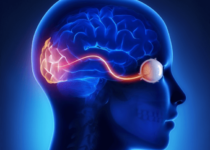Malnutrition- 4 Diverse forms and underlying causes
 Malnutrition: what is it?
Malnutrition: what is it?
It occurs when the public is either undernourished or overnourished. It is more prevalent in the United States due to dietary imbalances than to nutritional deficiencies.
It must check instantly as possible. A hospital patient\’s medical treatment and recovery may be affected by this. It increases the risk of death, length of stay, and some health care. Malnutrition must check within 24 hours of admission to the hospital.
Those with dementia or Alzheimer’s disease are more doubtless to suffer from malnutrition. Dental problems, loss of appetite, and functional refuse are playing a role factor in malnutrition in older adults.
A person becomes undernourished when exercise is insufficient and fundamental nutrients or when more swiftly respond. When an individual consumes too much, consumes the incorrect foods, does not consume enough, or takes too countless vitamins or other dietary supplements, they become overnourished. Overeating or consuming a diet elevated in fat and salt increases the risk of overnutrition.
4 diverse forms
1. The undernutrition

Undernutrition can be characterized by four distinct types: wasting, stunting, being underweight, and deficiencies in vitamins and minerals. Kids are especially vulnerable to disease and death due to undernutrition.
2. A low weight-to-height ratio is titled wasting.

A person with current and severe weight loss, the vast majority of whom doubtless haven’t eaten sufficiently or have had an infectious disease, for example, diarrhea, that has caused them to lose weight. A young child is at a higher risk of death, but treatment is available.
3. Low height-for-age.

Chronic or recurrent undernutrition due to unpleasant socioeconomic conditions, unpleasant maternal nutrition, illness, or improper infant and young child feeding and care. Stunting prevents kids from reaching their plump physical and cognitive potential.
Underweight kids have a low weight for their age. Kids may be stunted, wilted, or both.
Micronutrient deficiencies The body generates enzymes, hormones, and other substances that are fundamental for growth and development with the assistance of micronutrients.
Iron, vitamin A, and iodine are some of the most important nutrients in global health; their weakness poses a threat to the health and development of populations worldwide, especially those in low-income countries.
4. Obesity and overweight

People who are overweight or obese are too big for their height. Fat accumulation can be dangerous to your health if it’s strange or excessive.
A body mass index (BMI) is an indicator of weight for height.
The country consumes more energy-dense foods and beverages (high in sugars and fats) while engaging in less physical activity.
Diet-related illnesses
Globally, unhealthy diets and unpleasant nutrition are amongst the top risk factors for these diseases.
Do you know who is at risk?

Malnutrition impacts any state in the world. Malnutrition, in all its forms, is one of the global health challenges.
Children, adolescents, and women make up the vast majority of those at risk of malnutrition. Moreover, with an excellent beginning at birth, optimizing nutrition before life can have long-term health benefits.
Having low earnings increases the risk of malnutrition and the risks connected with it. Malnutrition impacts more nations that are poor.
Malnutrition treatments
Malnutrition according to your general health and how severely malnourished you are.
First of all, you should:

- Make definite you eat high-calorie and high-protein “fortified” foods
- A snack in between meals
- Calorie-rich drinks
- There are additionally several inhabitants who require sustain with underlying issues. Concern at domestic or occupational therapy, for example.
If these initial dietary changes do not help, the doctor, nurse, or dietitian may additionally propose that you take nutritional drinks or supplements.
The following treatments may be advisable if your concern is the consumption by fabrication changes like consuming soft or liquid foods:
Nutrition that is injected directly into the veins.
When to see a doctor

Consult a doctor if:
- Over the past three to six months, you have unintentionally lost a lot of weight
- Another symptom of malnutrition is present
- Someone in your care, a child may be malnourished
- You may want to urge a comrade or family member to see a doctor if you’re worried.
- A GP can decide if you’re at risk of malnutrition by evaluating your weight and height and asking about any medical issues you have or current changes in your appetite or weight.
- They may consult you with a healthcare professional if they believe you’re malnourished.
Assessment
You can identify malnutrition from weight loss charts, body mass index (BMI) charts, blood tests for micronutrients, and physical exams. If you have a history of weight loss and other symptoms connected with undernutrition, your doctor may order extra tests to identify micronutrient deficiencies.
In contrast, it can be harder to identify nutritional deficiencies that occur due to overnutrition.
A person whose diet consists primarily of processed foods and foods may not get enough vitamins and minerals. Consider thinking about discussing your dietary habits with your doctor if you suspect you have nutrient deficiencies.



